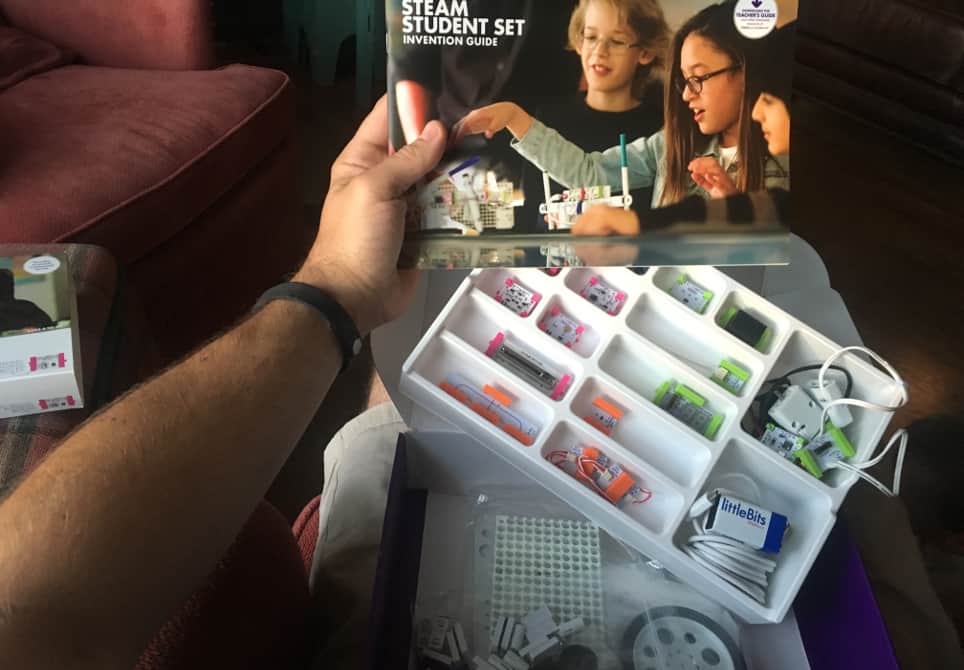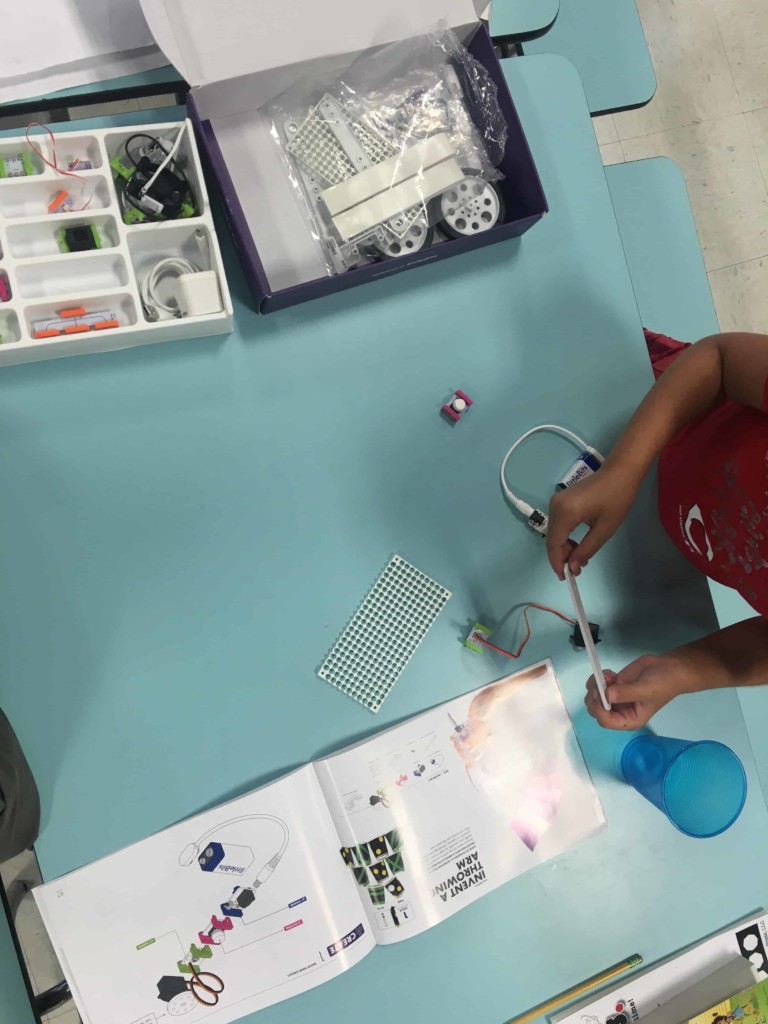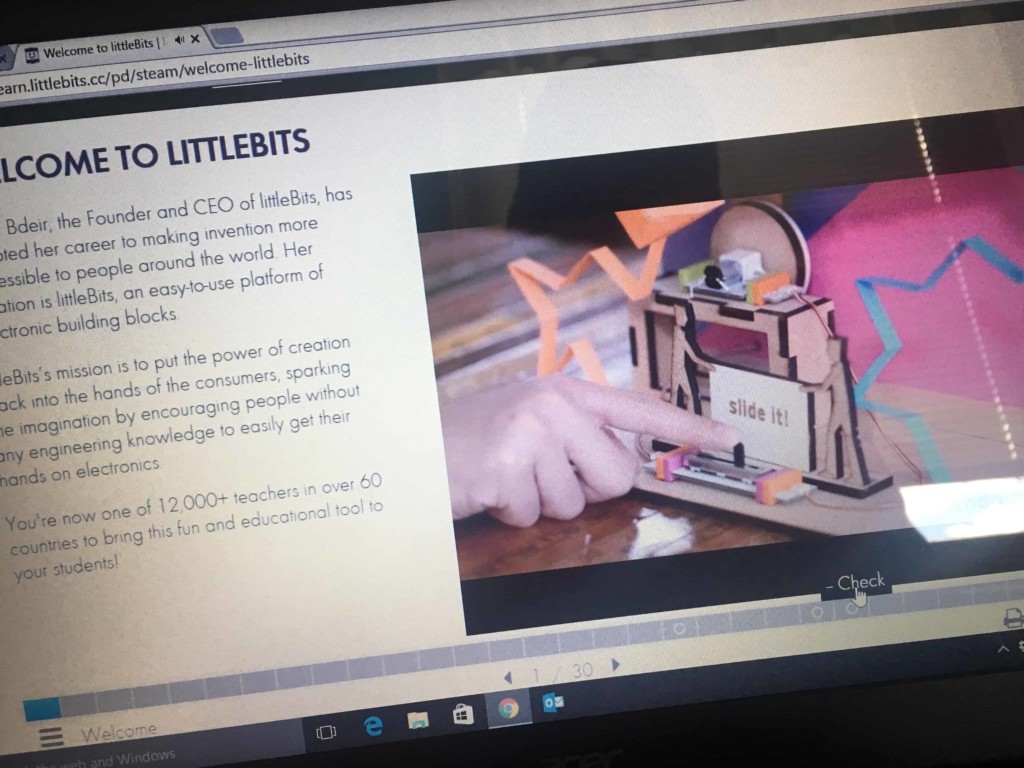Smart Review | littleBits STEAM Student Set & STEAM Teacher PD

We love the opportunity to test and review products, books and school resources.
For this recent review, we tapped into elementary school teacher Matt Cohen of Cincinnati, Ohio, who is a STEM Enrichment and Junior High Mathematics Teacher at St. Ursula Villa School.
We have also followed littleBits products and released this infographic.
Here’s what Matt had to say about the littleBits STEAM Student Set and online PD.
By Matt Cohen
GettingSmart.com and littleBits.cc extended me an opportunity to explore the littleBits STEAM Student Set, as well as participate in the littleBits STEAM online Professional Development (PD).
Being that I was familiar with littleBits, but never actually created something using the product, I excitedly accepted the offer. Three days after submitting my shipping information, a large box arrived in the mail and I quickly opened the littleBits STEAM Student Set.
 Lights, Magnets, Noise, Movement and More!
Lights, Magnets, Noise, Movement and More!
Upon opening the littleBits STEAM Student Set, my 3 and 4-year-old children were equally as excited as me to explore and build using its contents. My children loved the lights, magnets, noise, movement and interacting components that the kit had to offer.
After spending some time tinkering and building a project, I put the kit away and packed it up to be used in my STEM summer camp. The following reflections are based on my own and student usage of the littleBits STEAM Student Set in my STEM summer camp for 5th/6th graders.
littleBits STEAM Student Set
The Good: If you’re looking for something STEMy that fosters creativity, critical thinking, collaboration and student communication, then the littleBits STEAM Student Set will help you meet your goal. The kit contains many different components (or “bits”), all of which all are outlined and described in the thoughtfully and beautifully colored Student Guide booklet.
The Student Guide is very well done. Actually, I’m quite surprised as to the degree of how well it is done. The Student Guide does an excellent job introducing, showing and describing the kit’s different bits and its prototyping possibilities (which includes four different guided builds). Additionally, the Student Guide does a very good job introducing the concept of the Invention Cycle.
Here’s one of my students testing her invention:
- I think this kit best supports two students at a time, not three or four (but if a teacher must have three to four in a group, an additional Student Guide would be very nice and helpful toward overall engagement).
- The compiled bit projects continually disengage from the mounting board.
- Publicly sharing some littleBits sponsored CAD files for the mounting board and/or other shared projects would create many new dimensions to littleBits.
- The Student Guide does not define electricity (electrons)! I think the Student Guide would be improved by using my STEM teaching philosophy/saying: “following the electron!” Students should be challenged to critically think how electrons are manipulated in circuits, so to move atoms (sound) and to make electromagnetic radiation (photons).
littleBits STEAM PD
 The Good: I have participated in many different Professional Development (PD) classes and online sessions throughout my professional and academic career. I am a strong believer in PD. I recognize that great PD can be difficult to find, especially in STEM.
The Good: I have participated in many different Professional Development (PD) classes and online sessions throughout my professional and academic career. I am a strong believer in PD. I recognize that great PD can be difficult to find, especially in STEM.
Whether you are new to STEM or you have been teaching STEM for a couple of years, I offer my highest recommendation for participating in the littleBits STEAM PD. The STEAM PD does an excellent job introducing the participant in an engaging manner to almost everything related to the STEM movement, STEM concepts, and the STEM lexicon.
Though, it’s important to note, the STEAM PD is geared toward those using littleBits. Still, I think it is valuable to even those not using littleBits products.
Room for Improvement:
- The Student Guide does not define electricity (electrons)! I think the Student Guide would be improved by using my STEM teaching philosophy/saying: “following the electron!” Students should be challenged to critically think how electrons are manipulated in circuits, so to move atoms (sound) and to make electromagnetic radiation (photons).
- Differentiate the federal STEM initiative from STEAM. Our nation is in need of more Scientists, Technologists, Engineers, and Mathematicians. Yes, I know and agree, Art and Design are critical and valuable components in the STEM design process.
Have you used the littleBits kits and want to add to this review? Share your thoughts in the comments section below.
For more, see:
- Smart Review | Science Popularity Picks Up Steam with littleBits STEAM Student Set
- STEM And Making In Education Is Growing
- Redesign Schools with Learner-Centered STEM
Matt Cohen is a STEM Enrichment and Junior High Mathematics Teacher at St. Ursula Villa School. Follow him/them on Twitter: @MySTEMClass & @StUrsulaVilla
littleBits provided the STEAM student set and access to online PD for this review. If you are interested in having GettingSmart.com review your product or book, please contact [email protected]
Stay in-the-know with all things EdTech and innovations in learning by signing up to receive the weekly Smart Update.






0 Comments
Leave a Comment
Your email address will not be published. All fields are required.